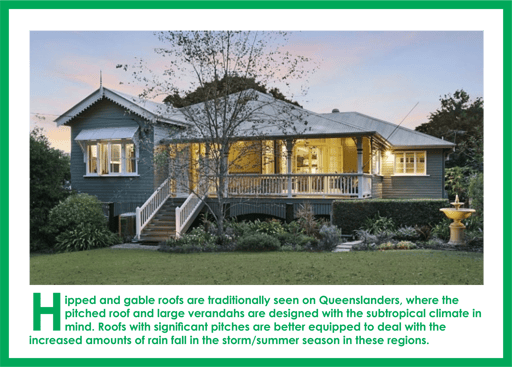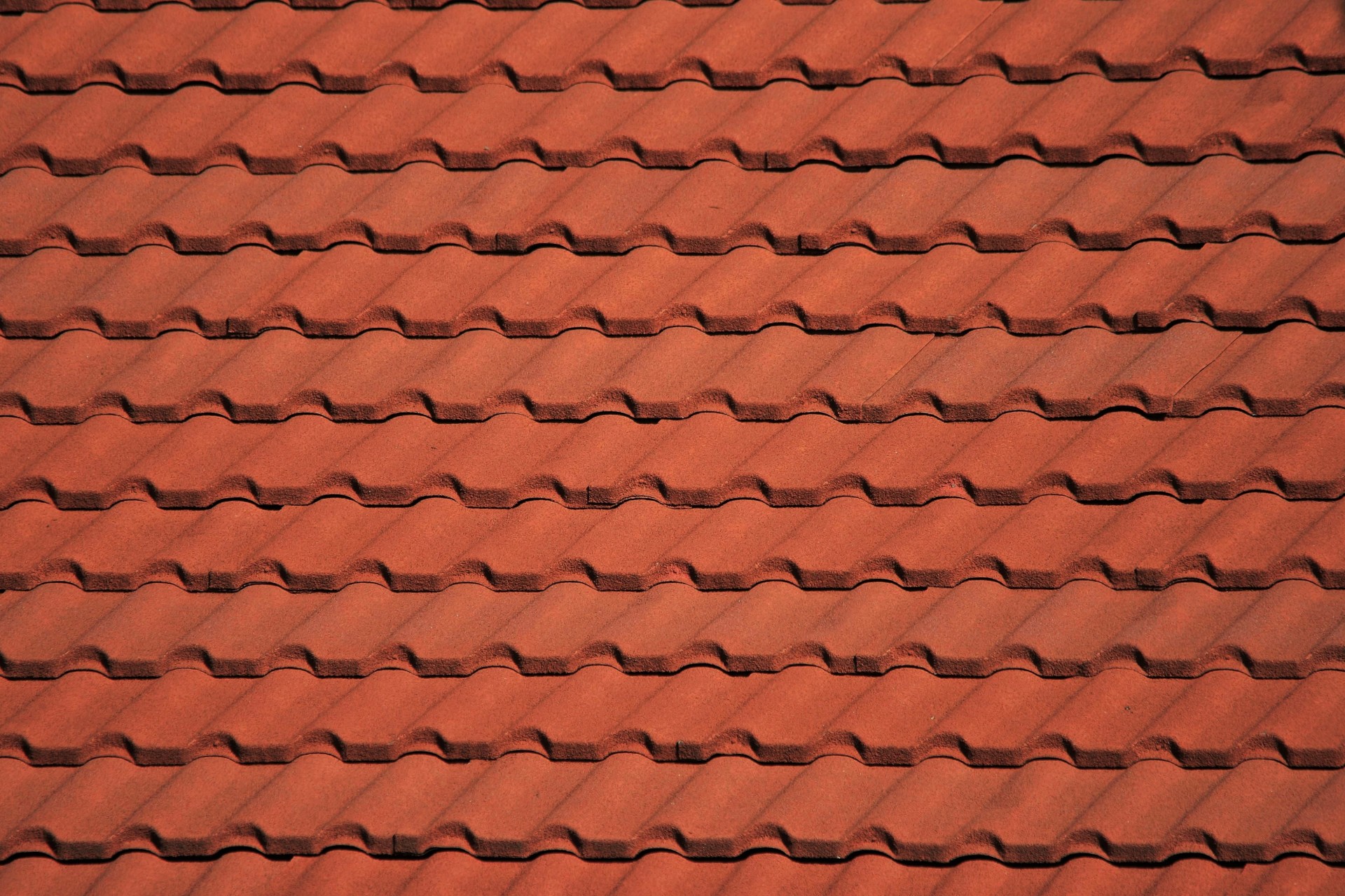The style and materials used on your roof can be significantly affected by the type of climate and environment your house is located in. Generally speaking, all roof styles, shapes and materials can be used in Australia, as long as they meet Australian standards and regulations. However, it’s important to keep factors such as durability and thermal control/comfort in mind when designing and making decisions about your roof, especially in the warm humid summers and wild thunderstorms of South East Queensland.
Even if you’re not currently in the market for a new roof or house, read on for some interesting facts about roof designs in Australia!
STYLE/SHAPES

An example of a home with multiple hipped sections of roof
Hipped roofs
Hipped roofs are the most common roof styles you’ll see, and are defined as having at least 3 faces/planes sloping down and away from a ridge. They’re common because they’re good all-rounders. They offer strength in high wind zones and often have large eaves or overhangs that offer the house good shade and protection from the elements.

Gable roofs
Gable roofs have two faces leading down from a central ridge and is easily recognised for the triangular shape that results at the end. Gable roofs are often seen in combination with hipped roofs to vary design and provide variance in the façade of the building.
Image courtesy of domain
Flat roofs
Flat roofs are most commonly seen on modern, box style houses as well as apartment blocks and commercial buildings. As the name suggests they appear flat to the eye, however to aid run off there is still a small slope. Flat roofs are economical and easier to install, however the minimal pitch means that rain and debris often gather on the roof, causing standing water, debris build up and clogging the roofs draining systems. This potentially shortens your roof’s lifespan. With good design, appropriate materials and regular maintenance however, flat roofs are still a popular option when it comes to roofing styles.

A skillion roof - Image courtesy of BAAstudio
Skillion roofs
Skillion roofs are similar to flat roofs by design – the noticeable different being that a skillion roof in installed at an increased pitch, varying from a low slant to steep angle. Steeper pitched skillion roofs are better equipped to aid run off and are used in a variety of design applications as they combine well with both older and more contemporary styles.
MATERIALS
In addition to the shape and style of your roof, the materials used to clad will also play an important role in keeping your home cool and protected.
Terracotta & Concrete Tiles
Terracotta tiles are a similarly popular roofing option in Australia. Despite their expense, they are visually appealing and the natural properties and density of terracotta tiles make them slow to heat and cool, which reduces temperature fluctuations within the home. On the other hand it also means that they retain heat a lot longer than their metal counterparts, which may not be desirable when considering cooling costs.
Concrete tiles are the cheaper alternative to terracotta tiles. While aesthetically they may not stand up to the test of time in the same way as terracotta does, they are still durable and offer the same thermal benefits as terracotta.

Metal
Metal sheet roofing is durable, lightweight and, when taking into account Colorbond’s range, available in a wide range of colours, making it one of the most popular choices for roofing materials in Australia. It's the go to cladding for the traditional 'Queenslander', whose namesake region’s severe thunderstorms and coastal weather provide some of the harshest conditions to endure. Metal roofing is long-lasting and relatively easy to replace and repair.
When installed in combination with insulating products such as foil blankets, the reflective properties of the commonly used metal type Zincalume may keep your home considerably cooler in the hot summer months.
One possible drawback of metal roofing however, especially in the coastal cities of Australia, is its susceptibility to corrosion and the potential leak issues this may result in. With good workmanship and regular maintenance however, this should be a distant worry as Bluescope steel offers a warranty of up to 30 years on their products, as well as a range of speciality products to suit even the harshest conditions.
Zincalume and Colorbond roof sheeting - Image courtesy of Bluescope Steel
We hope you found the information in this blog useful!
If you'd like any further information on any of the issues above, or would like to discuss other roofing concerns, please don't hesitate to give us a call and have a chat with one of our friendly roofing experts!
1800 476 634
You can also request a complimentary roof inspection and quote by clicking this link:
Updated 16th Jan 2020 to provide most current information



